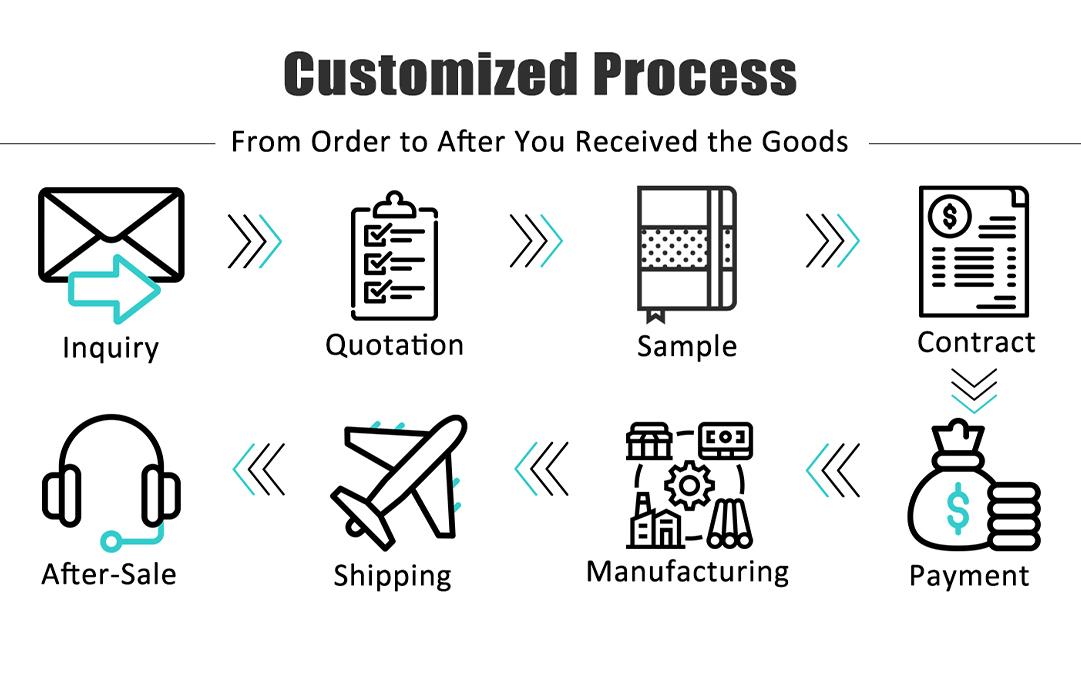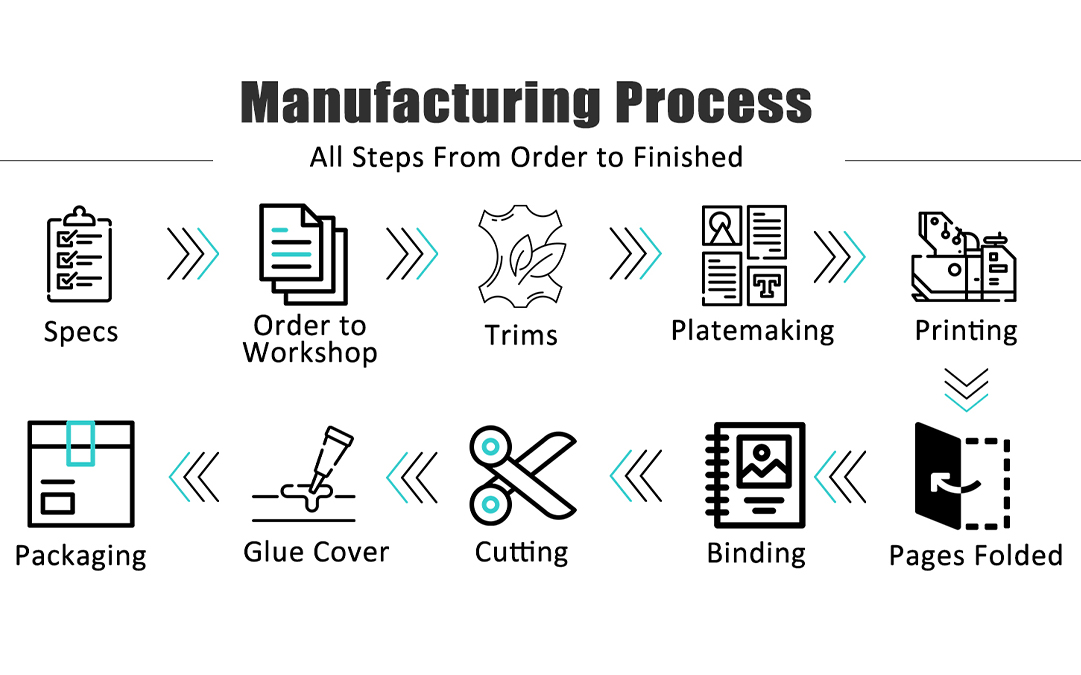What Are the Challenges in Custom Logo Notebooks and How to Overcome Them
Introduction
Navigating the custom logo notebooks industry presents unique challenges. From ensuring high-quality printing to meeting customization demands, every step requires careful planning and execution. As an expert in custom notebook printing, U will explore the main challenges and provide strategies to overcome them, ensuring U deliver premium, personalized notebooks that exceed expectations.
Understanding Custom Logo Notebook Challenges
Creating custom logo notebooks is a complex process. Here are the key challenges and how U can address them:
1. Ensuring High-Quality Printing
Challenge: Maintaining high-quality printing on custom logo notebooks can be difficult, especially with intricate designs and varied materials. Different surfaces react differently to printing processes, leading to inconsistencies in color, sharpness, and overall appearance. Moreover, the quality of ink and printing technology used significantly impacts the final product.
Solution: To overcome this challenge, it’s crucial to invest in advanced printing technologies such as digital printing, UV printing, and offset printing. These methods ensure precise and vibrant logo prints. Regular quality checks at each stage of production help identify and rectify issues early. Additionally, using high-quality inks that are compatible with various materials ensures consistent and durable prints. Collaborating with experienced graphic designers can also help in creating designs that translate well onto physical surfaces, maintaining brand integrity.
2. Handling Diverse Customization Requests
Challenge: Clients often have specific and diverse customization needs, from cover materials to binding styles. These requests can include unique combinations of materials, colors, sizes, and finishing touches. Managing these varied requirements while maintaining efficiency and quality can be challenging.
Solution: Offering a comprehensive range of customization options is essential. This includes different cover materials such as hardcovers, softcovers, leather, and eco-friendly options. Binding methods like spiral, smyth sewing, perfect binding, and others cater to different preferences. Providing a detailed customization guide helps clients understand available options and make informed decisions. Implementing a robust order management system that tracks each customization detail ensures that every client’s specifications are met accurately. Regular training for staff on handling diverse customization requests also plays a key role in maintaining high standards.
3. Managing Bulk Orders
Challenge: Processing large orders while maintaining quality and meeting deadlines can be overwhelming. The risk of errors increases with the volume of orders, and any delay in production can lead to missed deadlines and dissatisfied clients.
Solution: Efficient production workflows are critical in managing bulk orders. Investing in automated machinery and technology reduces manual errors and speeds up production processes. Implementing lean manufacturing principles helps streamline operations and eliminate waste. Regular communication with clients about production timelines and setting realistic expectations ensures transparency. Establishing a dedicated quality control team to oversee bulk order production helps maintain consistency and quality. Additionally, scalable production facilities that can handle varying order sizes without compromising on quality are essential.
4. Meeting Eco-Friendly Standards
Challenge: Increasing demand for eco-friendly notebooks adds pressure to source sustainable materials. Balancing cost-effectiveness with environmental responsibility can be challenging, especially when eco-friendly materials are often more expensive or harder to source.
Solution: Sourcing high-quality, eco-friendly materials such as recycled paper, vegetable-based inks, and biodegradable packaging materials is the first step. Building partnerships with suppliers who prioritize sustainability ensures a steady supply of these materials. Highlighting eco-friendly options in your product catalog and educating clients about the benefits of sustainable choices can drive demand. Offering incentives for choosing eco-friendly products, such as discounts or promotional benefits, encourages clients to opt for greener options. Additionally, obtaining certifications from recognized environmental organizations enhances your brand’s credibility and appeals to environmentally conscious customers.
5. Customizing Logo Applications
Challenge: Achieving the desired logo look on different notebook surfaces can be tricky. The texture, color, and material of the notebook can affect how the logo appears, leading to inconsistencies in branding.
Solution: Offering multiple logo application techniques like embossing, debossing, UV printing, and foil stamping provides clients with a variety of options to match their branding needs. Conducting thorough testing of logo applications on different materials ensures the best results. Providing samples of different techniques helps clients visualize the final product and make informed decisions. Regularly updating your portfolio with examples of successful logo applications demonstrates your capability and reliability in handling complex logo designs. Training staff on the latest logo application techniques and investing in high-quality equipment also ensure precise and consistent results.
6. Ensuring Durable Binding
Challenge: Custom notebooks with complex designs often face durability issues, especially with frequent use. Poor binding can lead to pages falling out, compromising the notebook’s functionality and the client’s satisfaction.
Solution: Using high-quality binding materials and techniques is crucial. Smyth sewing, which involves stitching through the fold of each section, provides a durable and flexible binding option. Reinforced spiral bindings offer added strength for notebooks that need to lie flat or fold back completely. Regularly testing notebooks for wear and tear, especially under conditions simulating frequent use, helps identify potential issues before they reach the client. Providing clients with recommendations based on their specific needs, such as suggesting smyth sewing for notebooks that will be heavily used, ensures the longevity and reliability of the product.
7. Adapting to Market Trends
Challenge: Staying updated with market trends and client preferences can be challenging. The notebook industry is dynamic, with evolving trends in design, materials, and functionalities that can influence client demands.
Solution: Continuously researching industry trends through market reports, trade shows, and customer feedback helps stay ahead. Incorporating popular features like custom planners, eco-friendly options, and travel-sized notebooks into your product line ensures relevance. Regularly updating your product catalog to reflect the latest trends and offering limited edition designs or seasonal collections can attract new clients and retain existing ones. Engaging with clients through surveys and feedback forms to understand their evolving preferences helps tailor your offerings accordingly. Additionally, monitoring competitors and industry leaders provides insights into successful trends and innovations.
8. Efficient Packaging and Shipping
Challenge: Proper packaging and timely shipping of custom notebooks are crucial to prevent damage and meet delivery deadlines. Inadequate packaging can lead to damaged products, while shipping delays can result in missed deadlines and dissatisfied clients.
Solution: Using sturdy, protective packaging materials ensures that notebooks arrive in perfect condition. Custom-fit packaging that minimizes movement during transit reduces the risk of damage. Partnering with reliable shipping companies and offering multiple shipping options, including expedited services, helps meet delivery deadlines. Implementing a tracking system that provides clients with real-time updates on their order status enhances transparency and trust. Regularly reviewing and optimizing packaging and shipping processes to identify and address potential issues ensures a smooth and efficient delivery experience.
Related Questions and Answers
What are the common materials used for custom logo notebooks?
Custom logo notebooks commonly use materials like leather, hardcover, softcover, and various types of paper, including recycled and eco-friendly options. The choice of material depends on the client’s preferences and the notebook’s intended use.
How can I ensure the durability of custom logo notebooks?
Ensuring the durability of custom logo notebooks involves using high-quality binding materials and techniques, such as smyth sewing and reinforced spiral bindings. Regular testing for wear and tear also helps maintain their quality over time.
What are the benefits of using eco-friendly materials for custom logo notebooks?
Using eco-friendly materials for custom notebooks appeals to environmentally conscious customers and enhances your brand’s sustainability image. It also reduces the environmental impact of production and promotes the use of sustainable resources.
How can I manage bulk orders efficiently without compromising quality?
Efficiently managing bulk orders involves implementing streamlined production workflows, investing in automated machinery, and maintaining regular communication with clients about production timelines. Setting realistic expectations ensures that high-quality custom notebooks are delivered on time.
What customization options are available for custom logo notebooks?
Customization options for custom logo notebooks include various cover materials (hardcover, softcover, leather), binding methods (spiral, smyth sewing, perfect binding), logo application techniques (embossing, debossing, UV printing, foil stamping), and paper types (recycled, eco-friendly, high-quality). Offering detailed customization guides helps clients make informed choices.
Buying Guide for Custom Logo Notebooks
When purchasing custom logo notebooks, consider the following factors:
- Material: Choose from options like leather, hardcover, softcover, and eco-friendly paper.
- Binding: Select from spiral, smyth sewing, perfect binding, and other durable binding methods.
- Logo Application: Opt for techniques like embossing, debossing, UV printing, and foil stamping.
- Customization: Look for providers offering detailed customization guides and flexible design options.
- Order Management: Ensure the provider has efficient workflows and communicates regularly about production timelines.
- Sustainability: Consider eco-friendly materials and sustainable production practices.
Conclusion
Navigating the challenges of custom logo notebook production requires a combination of advanced technology, flexible customization options, and efficient management practices. By addressing these challenges head-on, U can deliver high-quality, personalized notebooks that meet clients’ expectations and enhance your brand’s reputation. Embrace these strategies to overcome obstacles and succeed in the competitive custom notebook printing industry.
Contact Us: Ms. Rimo Lau WhatsApp Me
Whatsapp: 0086 18336352791 – WeChat&Phone
Website: www.fullcolorprintstationery.com
E-Mail: [email protected]





